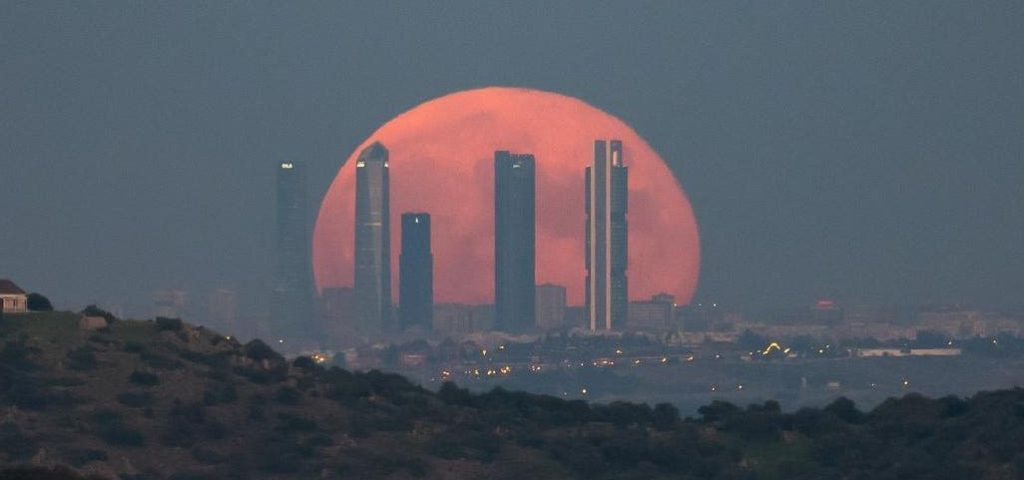One of the most famous full moons of the year, the “Harvest Moon,” this week delighted sky-watchers around the world as it rose gracefully in the east.
As a bonus, September’s full moon was also termed a “supermoon”—the final one of four in 2023.
Although a fine standalone sight in itself, the rising of the full moon also put our natural satellite in the perfect celestial position to eclipse the sun on Saturday, October 14 as a rare annular “ring of fire” solar eclipse comes to the U.S. (as well as both Central and South America).
This “supermoon” and the coming “ring of fire” are inextricably connected. “Supermoon” is an astrological name for a full moon at perigee. The moon’s orbit of Earth is slightly elliptical, so in each of its 29.5 day orbits there’s a point when it’s closest to Earth. It’s called perigee and it appears slightly larger in our sky. There’s also a farthest point when it looks smaller, apogee.
The moon reaches a perigee and an apogee in each orbit it makes of Earth, but when perigee occurs at full moon, apogee will occur at the next new moon (or vice versa). So since the moon swung relatively close to Earth this week, it will swing relatively farther away at the next new moon on October 14.
Eclipses occur because the moon’s orbital path intercepts what astronomers call the ecliptic—the apparent path the sun takes through our daytime sky. Crucially, it will do so while seeming smaller in the sky (because it’s at apogee). It will therefore block only the center of the sun, causing an annulus or ring around the new moon.
On October 14 the eclipse can only be viewed safely through solar eclipse glasses, but this week’s full moon was perfectly safe to look at with the naked eye—as it always is. Instead of being a bright, off-white orb when it’s high in the sky the rising full moon takes on a gorgeous orange hue as it appears (or disappears) close to the horizon.
The reason for the moon’s color as it rises (and sets) is Rayleigh scattering—the deflection of light off molecules of nitrogen and oxygen in the Earth’s atmosphere. Visible light is a form of electromagnetic radiation, which is made-up of photons that travel in different wavelengths. Short wavelength blue and green light strike the molecules and get scattered while longer wavelength red light more easily travels through Earth’s atmosphere.
The next full moon will be the “Hunter’s Moon” on October 28. As a result of the solar eclipse, this full moon will still be in a position to intercept the ecliptic. That will make it align, more of less, with the Earth and the sun. As it drifts into Earth’s outer penumbral shadow it will lose its luster and seem oddly dull. However, since it won’t much enter the Earth’s darker central shadow it won’t turn red and become a “Blood Moon.” The next “Blood Moon” is not until 2025.
I’m an expert on eclipses—the editor of WhenIsTheNextEclipse.com and author of The Complete Guide To The Great North American Eclipse of April 8, 2024. For the very latest on the “ring of fire” solar eclipse—including travel and lodging options—check my main feed for new articles each day.
Wishing you clear skies and wide eyes.
Read the full article here










